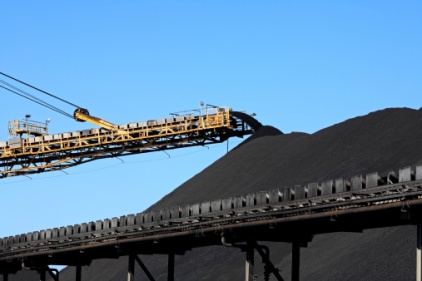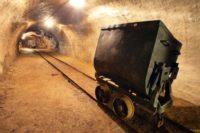 The U.S. Department of Labor's Mine Safety and Health Administration (MSHA) issued 335 citations, orders and safeguards during special impact inspections conducted at eight coal mines and four metal/nonmetal mines last month. The coal mines were issued 254 citations, 19 orders and one safeguard, while the metal/nonmetal operations were issued 52 citations and nine orders.
The U.S. Department of Labor's Mine Safety and Health Administration (MSHA) issued 335 citations, orders and safeguards during special impact inspections conducted at eight coal mines and four metal/nonmetal mines last month. The coal mines were issued 254 citations, 19 orders and one safeguard, while the metal/nonmetal operations were issued 52 citations and nine orders.
These inspections, which began in force in April 2010 following the explosion at the Upper Big Branch Mine, involve mines that merit increased agency attention and enforcement due to their poor compliance history or particular compliance concerns, including high numbers of violations or closure orders; frequent hazard complaints or hotline calls; plan compliance issues; inadequate workplace examinations; a high number of accidents, injuries or illnesses; fatalities; and adverse conditions such as increased methane liberation, faulty roof conditions and inadequate ventilation.
As an example from last month's impact inspections, on April 17, MSHA personnel visited Rebco Coal Inc.'s Valley Mine No. 1 in Claiborne County, Tenn., during the production shift. They secured the communications systems to prevent advance notification of the inspection and traveled the primary escapeway to inspect all four conveyor belts to the mechanized mining unit. MSHA issued 81 enforcement actions as a result of the inspection, including 74 citations, four failure-to-abate orders for previously issued citations, one unwarrantable failure citation and two unwarrantable failure orders.
The inspection party cited a broad spectrum of violations covering ventilation, accumulations of combustible materials, electrical equipment, trailing cables and fire protection. During previous inspections at the mine, equipment had been tagged out of service; however, when the operator resumed production a week prior to the impact inspection, the equipment had not been repaired.
MSHA found numerous defects on the mechanized mining unit's roof bolter, including accumulations of combustible materials. An unwarrantable failure order was issued for the operator's failure to conduct an adequate electrical examination on the continuous miner to ensure that the equipment is maintained in a safe operating condition. Citations were issued for 18 defects of the continuous miner that affect the permissibility of the machine, and additional citations were issued for failing to maintain the lighting system on the remote-controlled machine, accumulations on the continuous miner, failing to install a methane-sensing device as close to the working face as practical and failing to adequately insulate the trailing cable for the miner. The operator's failure to adequately examine the equipment and maintain it in a safe and permissible condition posed a high degree of danger to the miners.
"This unexpected inspection found several safety violations that placed miners at serious risk, a failure by the mine operator to conduct basic find and fix examinations, and a disregard for violations previously cited by MSHA," said Joseph A. Main, assistant secretary of labor for mine safety and health. "As evidenced by the recent inspection blitz, MSHA will not hesitate to take action to protect workers at risk."
As another example from last month's inspections, on April 24, MSHA personnel visited Argus Energy WV LLC's Deep Mine No. 8 in Wayne County, W.Va. — the second impact inspection at this mine. The mine's communication system was captured to prevent advance notice of the inspection. The inspection party issued 87 104(a) citations, one unwarrantable failure 104(d) citation and eight unwarrantable failure 104(d) orders for violations of 51 sections of MSHA regulations.
Deep Mine No. 8 was selected for an April inspection due to its frequent number of accidents and repeated noncompliance with mandatory safety and health standards. Since April 2011, there have been 23 separate accidents, 12 having occurred since this January. The operator has been issued a total of 386 citations and 22 orders, 11 of which were unwarrantable failure orders.
During last month's impact inspection, the mine operator was cited for combustible material that was permitted to accumulate in the belt entry, on and under belt equipment, and along moving belts. MSHA inspectors found coal in large piles for distances up to 100 feet and up to 2 feet in depth in numerous locations. Conveyor belts were rubbing the belt structure, and the tail roller had been turning in accumulations 2 feet deep and 7 feet wide — conditions that pose a significant fire and explosion hazard. The inspection team also issued two 104(d)(1) orders for failure to conduct adequate examinations on the belt conveyors.
The operator also was cited for failure to adequately support the mine's roof and ribs, and allowing miners to work and travel under an unsupported roof, exposing them to potential roof falls and serious injury.
Finally, inspectors found multiple electrical violations, including a failure to maintain permissible face equipment and provide an accurate electrical system map, have a qualified examiner, and properly install and insulate wires and cables for communications and power.
Since April 2010, MSHA has conducted 443 impact inspections at coal and metal/nonmetal mines. These inspections have resulted in 7,948 citations, 785 orders and 29 safeguards for a total of 8,762 issuances.

